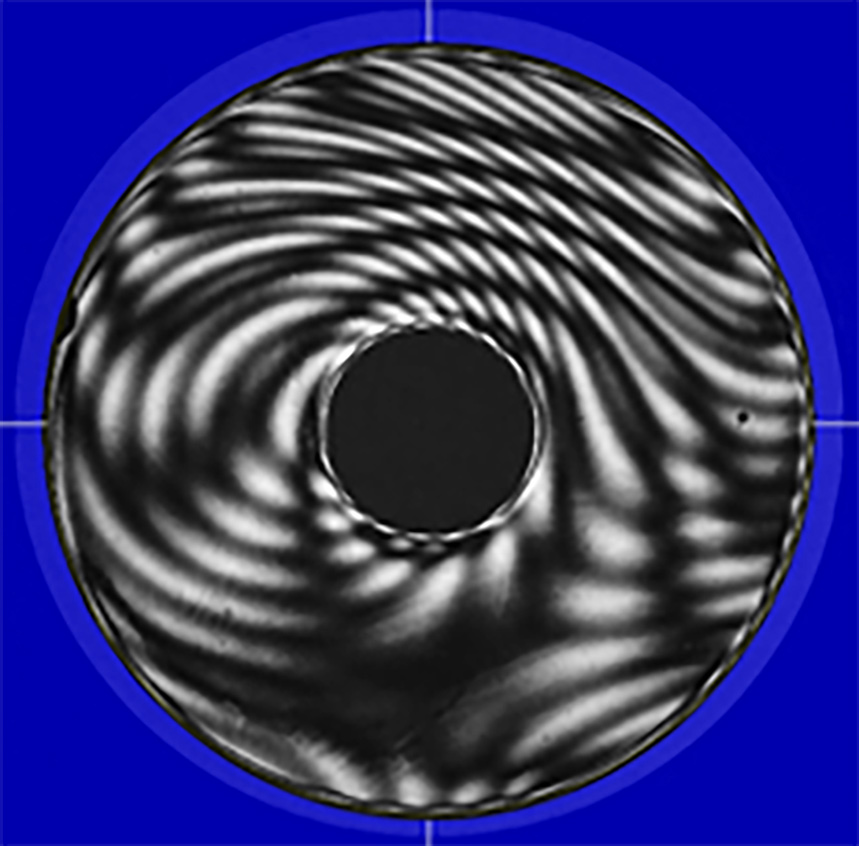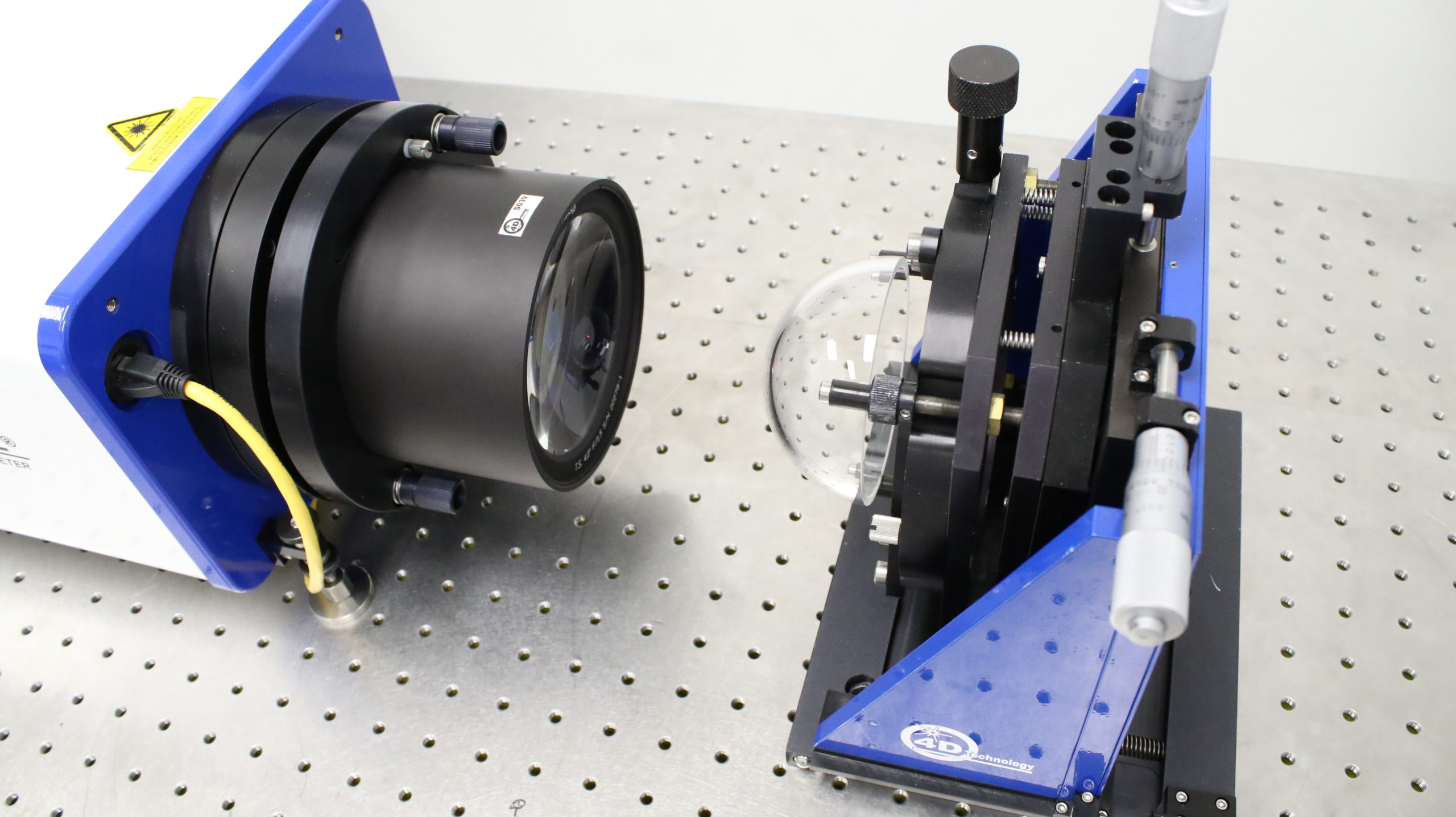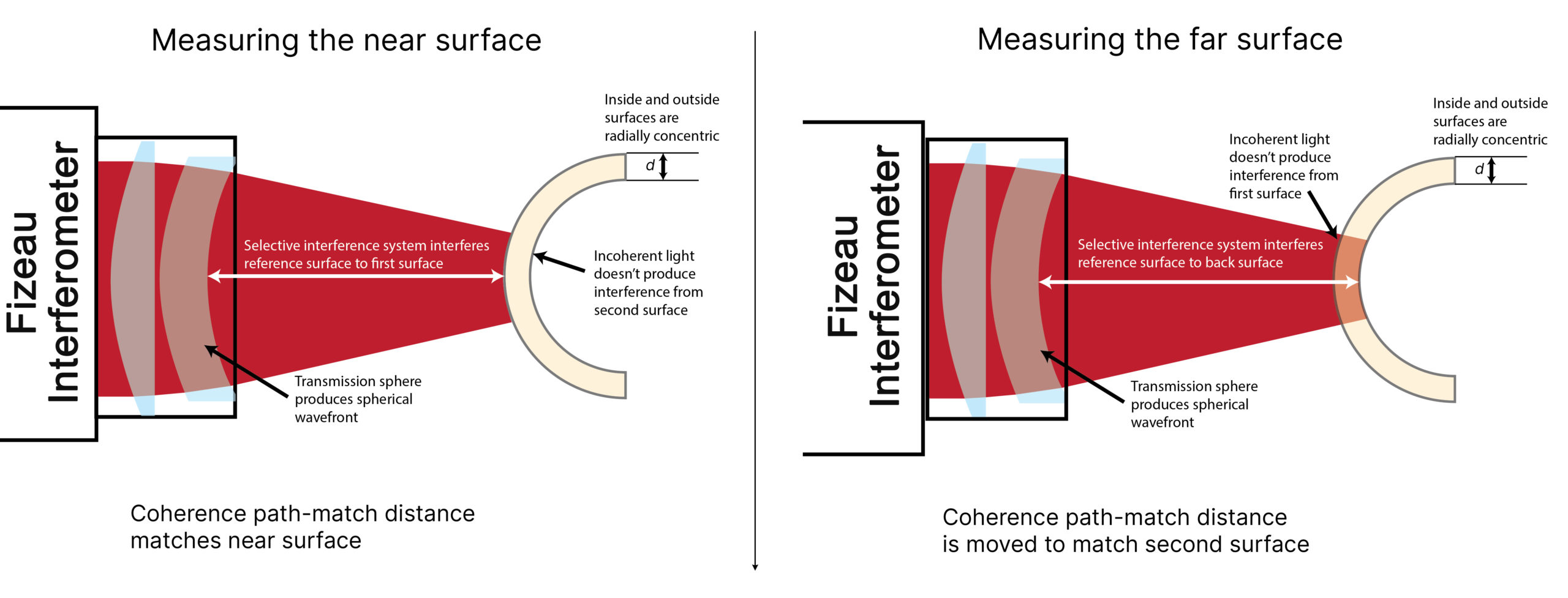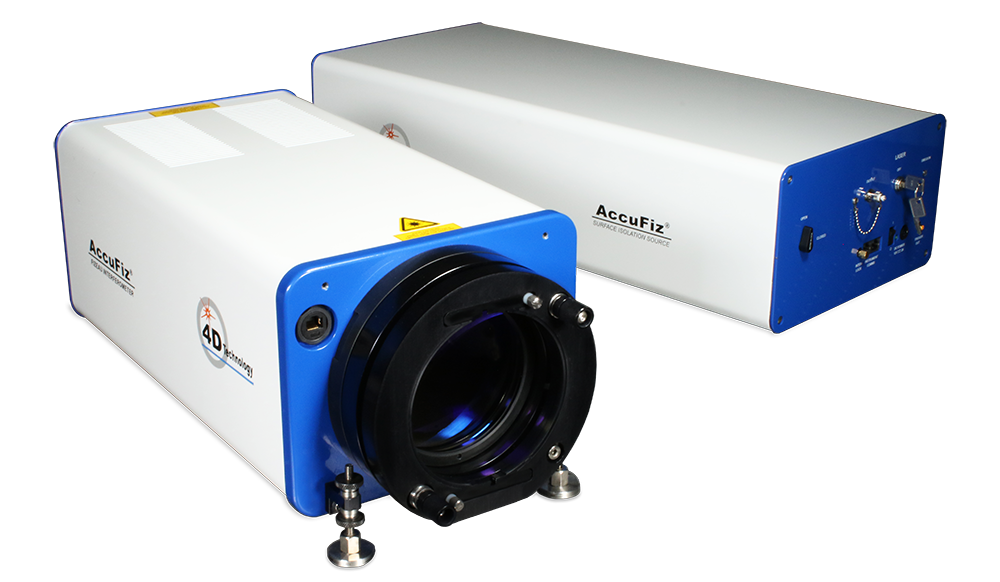Thin Transparent Optics
The category of thin, transparent optics includes both plane-parallel (flat) optics such as windows, and curved components such as RADAR and LIDAR domes.
When measuring transparent optics, all of the surfaces in the interferometer’s test path can potentially cause interference. Most optics are sufficiently thick, or have a sufficiently large tilt angle between their surfaces, that only one of the surfaces typically interferes with the reference surface.
However, when the component is thin and the surfaces are parallel, both surfaces interfere with the reference, resulting in a complex interferogram like the one shown below for a thin glass disk. It is difficult or impossible to measure the surface based on this dense pattern.

Traditionally, the only way to solve this problem has been to apply an anti-reflective coating to one surface so that the other can be measured. The coating is then removed and applied to the other surface for a second measurement. It is a messy, time-consuming operation that puts the optic in danger of being damaged.
A short coherence source enables measurement
With a short coherence laser source, interference only occurs between surfaces within a narrow distance range from the reference surface. Using a short coherence interferometer an operator can isolate a single surface to measure, even in multi-component systems. The interferogram below shows the same glass disk as in the image above; but here, with a short coherence source, only one surface interferes. Acquisition takes seconds, and no coatings are required.

Measure both surfaces, and more, in a single setup
A short coherence interferometer lets you measure the front surface of the optic, then measure the back surface through the optic, without readjusting or realigning the system. From these two measurements we can also extract the optical thickness variation and transmitted wavefront error. Adding an empty cavity measurement enables measurement of homogeneity as well.
Measure domes and other curved surfaces
Highly curved, transparent components can also be measured in this fashion. These measurements, however, require one additional feature of the Fizeau interferometer: minimal retrace error, which leads to significant error for curved measurements.
The AccuFiz D Short Coherence Interferometer features a completely on-axis design to minimize retrace error—while instantaneous, “dynamic measurement” ensures high precision, even in noisy environments. The combination enables accurate measurement of domes, such as the one below.

Just as with a plane-parallel optic, both surfaces of a dome can be measured in a single test setup (see below). A reference sphere matches the wavefront to the nominal shape of the dome. An automated “path matching” mechanism precisely locates the distance to the front and back surfaces, which can each be measured in turn.

Products for Thin, Transparent Optics
AccuFiz D Short Coherence Interferometer
The fully on-axis, dynamic AccuFiz D Fizeau interferometer can measure plane-parallel optics as well as domes and other highly curved components.
Surface Isolation Source (SIS)
4D’s Surface Isolation Source is an optional, external laser source for measuring transparent optics with a standard AccuFiz interferometer. You can also calculate transmitted wavefront error, optical thickness and homogeneity, all from a single measurement setup.
Get In Touch
(520) 294-5600
Location
3280 E Hemisphere Loop, Ste 146
Tucson, AZ 85706
4Dinfo@ontoinnovation.com
Office Hours (Arizona Time)
Mon: 8am – 5pm
Tue: 8am – 5pm
Wed: 8am – 5pm
Thur: 8am – 5pm
Fri: 8am – 5pm
Sat: Closed
Sun: Closed
Send a Message


